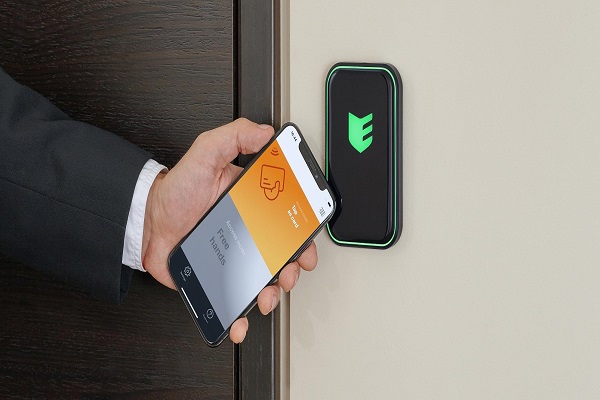Finding the right security system for your business is no easy feat. The threats to your security are vast and varied and you need a system that will protect you from all of them.
Control systems can be complicated and overwhelming, so you need a solution that is easy to use, with stress-free access and effortlessly updatable. This is where smartphone access control systems can really help you out.
What is Access Control?
Access control is the restriction of access to certain places or resources where permission to access is required. It is a crucial part of any security system and takes shape in many different forms, from physical electronic systems to computer security access models. Traditionally, physical security took the form of personnel like guards and ticket takers. Technology has revolutionised security in many ways and mobile access control systems are just one of them.
What is a Mobile Access Control System?
This latest trend in security provides a safe, flexible, and convenient way to control access to any building or property. It allows staff to protect operations and monitor visitors without compromising on security or causing inconvenience to individuals who would otherwise need to remember to bring along smart cards or other physical credentials. Managing physical access cards and credentials becomes quite a frustrating headache. Therefore, instead of these outdated physical keys, mobile access control systems use smartphones and other mobile devices instead which is a much more modern and convenient way of monitoring access and maintaining security.
A Revolution in Access Control
There are new and upcoming standards that are helping to secure the future of mobile access control. The mobile workforce is here to stay so it’s important that security measures will be updated to keep up the pace. One survey predicts that the global workforce will have 42.5 per cent mobile employees and with this massive increase in mobility comes more serious threats to the IT infrastructure of small and big companies alike. With this mobile revolution, users can now use their mobile credentials to the reader. With just the mobile phone that an employee already carries in their pocket, staff can enter the buildings, rooms, and sites that they have the authority to. A staggering 98 per cent of employees feel that access control is a nuisance at times so this option brings an opportunity to reduce the friction between access control and employees that have a place to go. Recent updates to the standards of these mobile systems have been pivotal to providing the first level of worldwide, unified security. Leaders throughout the industry have worked with the standards commission to create these rigorous global guidelines.
Advantages of Mobile Access Control
We’ve touched on the pros, but there are some definite advantages that come from using a mobile access control system. Here are just a few:
1) It saves money. Cloud-based mobile access control systems work well with the phones that staff members or tenants already own so you won’t have to pay out for the physical key cards. You’ll never have to deal with lost cards and replacements or purchasing new keys for ones that need them. Mobile access control systems themselves cost about half the price of a physical key card system.
2) It saves time. Using a smartphone saves a lot of time as staff members and tenants often have them ready to use anyway. You’ll also save a lot of time when it comes to adding and removing users as this is done digitally, rather than distributing keys to the people that need them.
3) It increases the level of security. You can simplify the entry requirements for the building or place of entry and lost keys don’t cause a threat to security. Each user has increased security and flexibility and building teams don’t need to worry about keys getting into the wrong hands. If the worst does happen, the credential can be easily deactivated from a remote location.
4) It’s a lot more convenient to use. Any kind of smartphone can easily be integrated with the mobile access control system and many individuals requiring access will already own and regularly carry their own mobile device. Those in charge of monitoring the security team also have a much more convenient job as just the push of a button will allow them to change access credentials, remove authority or change any security settings you need. Updates are made easily rather than expensively.
5) It’s easy to audit and keep records. Cloud-based mobile access control systems keep a secure and detailed record of comings and goings throughout the building. That way you can keep track of people’s activities in real-time. This will also prove to be a great asset in the case of an emergency as you can immediately grant access to records of all of the locations in the building to ensure a thorough evacuation.
The Other Elements Involved
There are several major elements that are crucial for access control, and you need to find an option that works best for you, your building and the security needs to are required to meet. Some systems are camera equipped so you can see who is entering and leaving the premises. With a cloud-based system, this live feed can be accessed even if you are away from the property. You can choose either a server-based system or a cloud-based system, both of which will have pros and cons that you will need to consider before you make the decisions you need to make. Both options will allow you to monitor and control access from one centralised location. While on-premises, server-based systems don’t depend on an internet connection, they do require a lot of infrastructure and expertise in the area. On the other hand, cloud-based software is easy to access and update. Access credentials can be added directly to users’ personal phones and movements can be monitored from a remote location if needed.

No comments:
Post a Comment